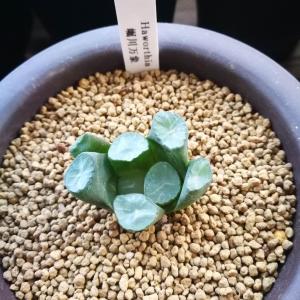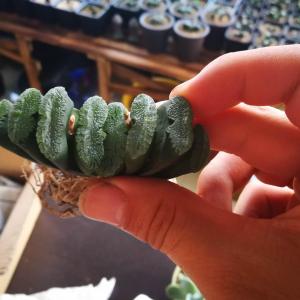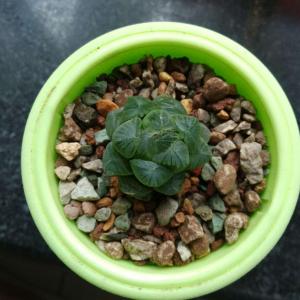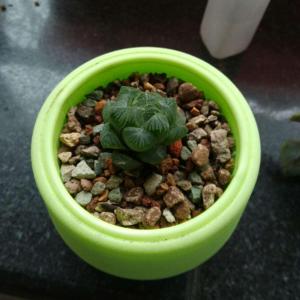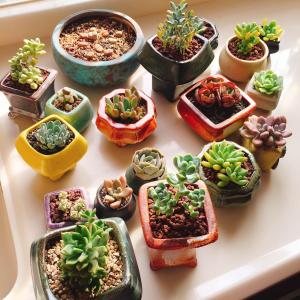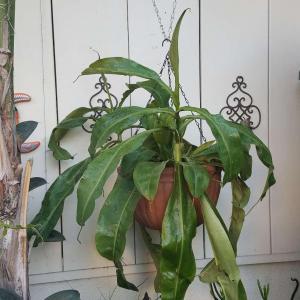成长记
xElze
2017年08月15日

I new added a "8" in my "garden"


1
0
meriunkat:aww it's so cute 😆 I want one now 😁
文章
Dummer. ゛☀
2017年08月15日

Agave is a desert plant, native to Mexico and hardy in zones 8-10. While generally a low maintenance, easy-to-grow plant, agave can be susceptible to fungal and bacterial rots, as well as pest problems such as the agave snout weevil and the agave plant bug (Caulotops barberi). If you have noticed bugs eating agave plants in your landscape, continue reading to learn more about Caulotops barberi pests and controlling agave plant bugs in the garden.

What are Caulotops Barberi Pests?
In the landscape, agave plants can potentially grow to a height and spread of 20 feet. However, these landscape grown agaves can be susceptible to the Caulotops barberi pest, resulting in stunted or irregular growth. If you notice stunted or distorted growth, speckled or spotted foliage, or what appears to be scabs or chew marks on your agave plants, you may wonder, “Are bugs on my agave?” The answer may be a resounding, yes! The agave plant bug is also commonly called the agave running bug because for such a small insect, it has long legs, enabling the insect to run very quickly.
These 1.6 mm long insects can go almost unnoticed because they are so small and will quickly hide if they feel threatened. Agave plant bugs are most likely the culprit in U.S. hardiness zones 8-10. Container grown agave plants in cooler climates are rarely effected by this pest, though. In late summer to early fall, large populations of agave plant bugs may infest agave and other succulents, causing massive damage to a xeriscape. In groups, these small tan-black colored insects are much easier to spot, but by then you’ll have quite an infestation to try to rid your landscape of and damage to some of the plants may be irreversible.

Agave Plant Bug Control
Insecticidal soap or broad spectrum insecticides can be effective in controlling agave plant bugs. However, these tiny insects can hide in soil, mulch and garden debris around the infected plant, so it is necessary to treat all areas around the plant as well. Keep beds clear of debris to eliminate hiding places. Insecticides should be applied in the early morning or late at night, when Caulotops barberi pests are most active. Agave plant bug control should be repeated every two weeks to ensure eradication of this pest. Be sure to spray all surfaces of the plant, as these small insects can easily hide in every nook and cranny. A preventative systemic insecticide can be used in spring to help control agave pests.

What are Caulotops Barberi Pests?
In the landscape, agave plants can potentially grow to a height and spread of 20 feet. However, these landscape grown agaves can be susceptible to the Caulotops barberi pest, resulting in stunted or irregular growth. If you notice stunted or distorted growth, speckled or spotted foliage, or what appears to be scabs or chew marks on your agave plants, you may wonder, “Are bugs on my agave?” The answer may be a resounding, yes! The agave plant bug is also commonly called the agave running bug because for such a small insect, it has long legs, enabling the insect to run very quickly.

These 1.6 mm long insects can go almost unnoticed because they are so small and will quickly hide if they feel threatened. Agave plant bugs are most likely the culprit in U.S. hardiness zones 8-10. Container grown agave plants in cooler climates are rarely effected by this pest, though. In late summer to early fall, large populations of agave plant bugs may infest agave and other succulents, causing massive damage to a xeriscape. In groups, these small tan-black colored insects are much easier to spot, but by then you’ll have quite an infestation to try to rid your landscape of and damage to some of the plants may be irreversible.

Agave Plant Bug Control
Insecticidal soap or broad spectrum insecticides can be effective in controlling agave plant bugs. However, these tiny insects can hide in soil, mulch and garden debris around the infected plant, so it is necessary to treat all areas around the plant as well. Keep beds clear of debris to eliminate hiding places. Insecticides should be applied in the early morning or late at night, when Caulotops barberi pests are most active. Agave plant bug control should be repeated every two weeks to ensure eradication of this pest. Be sure to spray all surfaces of the plant, as these small insects can easily hide in every nook and cranny. A preventative systemic insecticide can be used in spring to help control agave pests.
0
0
文章
Miss Chen
2017年08月15日

Portulaca grandiflora, also called moss rose, tends to self-seed, but harvesting seeds from this annual plant helps keep it where you want it. Moss rose quickly spreads in full-sun, dry areas when seed capsules are left on the plant. Growing 4 to 8 inches tall and 6 to 24 inches wide, moss rose varieties include the early-flowering Margarita series, "Sundial," which produces early, double flowers in sunset colors, and "Calypso," which features white, yellow, orange, pink or purple double flowers.

Moss Rose Varieties
Suppliers sell moss rose cultivars, hybrids, strains, heirlooms and mixes, and only some of these come true from seed. Cultivars and hybrids are specially bred to have certain characteristics, such as flower color, shape or performance, but they don't pass on these characteristics to their offspring. Some cultivar and hybrid seeds may not even sprout. Strains and heirloom plants are often older varieties, and these are more reliable in producing plants that are similar to themselves. Mixes are different varieties mixed together, and these may cross-fertilize, producing unpredictable results. Moss rose cultivars and hybrids are often more expensive than other varieties. If you aren't sure what type of moss rose you're growing, ask the garden center where you bought it.
Harvesting Seed
Moss rose seeds are fine as dust and develop inside seed capsules, which you can harvest. Moss rose flowers in summer. The seed capsules are 1/8 to 1/4 inch long, and they develop after the flowers are pollinated. When the seed capsules are ripe, they turn dry and papery and split open. Inside are many tiny, blue-gray seeds.

Harvest ripe moss rose seed capsules on a dry, sunny day. If you aren't sure whether the capsules are ripe, gently rub one between your thumb and forefinger. To avoid spilling the seeds on the soil, where they may sprout the following year, take a seed capsule indoors before testing it. Pinch off the ripe capsules and put them in a paper bag.
Separating Seed
Moss rose seeds should be separated from the seed capsules and dried before storing. Crush the seed capsules over a sheet of newspaper in a draft-free place. Place a colander on another sheet of newspaper, and pour the the crushed seed capsules into the colander. Gently shake the colander so that the seeds fall through but the capsule debris is left behind.
Moss rose seeds must be stored in an airtight container. Lift the newspaper and close it along its crease. Place one edge of the crease at the lip of an open airtight container, and lift the newspaper so the seeds slide into the container. Flick the newspaper once or twice with your finger to loosen any remaining seeds, put the newspaper down, then seal the container.
Storing Seed
A refrigerator is the best place for storing moss rose seeds, where they will remain fresh for sowing the following year. Put moss rose seeds in their sealed, airtight container in a refrigerator or similar cool, dry place such as a basement or cellar. Don't place the container in direct light, and don't open the container to check on the seeds until it's time to sow them. Direct light warms up the inside of the container, damaging the seeds, and opening the container allows moisture inside, which encourages the seeds to rot.

Moss Rose Varieties
Suppliers sell moss rose cultivars, hybrids, strains, heirlooms and mixes, and only some of these come true from seed. Cultivars and hybrids are specially bred to have certain characteristics, such as flower color, shape or performance, but they don't pass on these characteristics to their offspring. Some cultivar and hybrid seeds may not even sprout. Strains and heirloom plants are often older varieties, and these are more reliable in producing plants that are similar to themselves. Mixes are different varieties mixed together, and these may cross-fertilize, producing unpredictable results. Moss rose cultivars and hybrids are often more expensive than other varieties. If you aren't sure what type of moss rose you're growing, ask the garden center where you bought it.
Harvesting Seed
Moss rose seeds are fine as dust and develop inside seed capsules, which you can harvest. Moss rose flowers in summer. The seed capsules are 1/8 to 1/4 inch long, and they develop after the flowers are pollinated. When the seed capsules are ripe, they turn dry and papery and split open. Inside are many tiny, blue-gray seeds.

Harvest ripe moss rose seed capsules on a dry, sunny day. If you aren't sure whether the capsules are ripe, gently rub one between your thumb and forefinger. To avoid spilling the seeds on the soil, where they may sprout the following year, take a seed capsule indoors before testing it. Pinch off the ripe capsules and put them in a paper bag.
Separating Seed
Moss rose seeds should be separated from the seed capsules and dried before storing. Crush the seed capsules over a sheet of newspaper in a draft-free place. Place a colander on another sheet of newspaper, and pour the the crushed seed capsules into the colander. Gently shake the colander so that the seeds fall through but the capsule debris is left behind.
Moss rose seeds must be stored in an airtight container. Lift the newspaper and close it along its crease. Place one edge of the crease at the lip of an open airtight container, and lift the newspaper so the seeds slide into the container. Flick the newspaper once or twice with your finger to loosen any remaining seeds, put the newspaper down, then seal the container.
Storing Seed
A refrigerator is the best place for storing moss rose seeds, where they will remain fresh for sowing the following year. Put moss rose seeds in their sealed, airtight container in a refrigerator or similar cool, dry place such as a basement or cellar. Don't place the container in direct light, and don't open the container to check on the seeds until it's time to sow them. Direct light warms up the inside of the container, damaging the seeds, and opening the container allows moisture inside, which encourages the seeds to rot.
0
0
文章
Miss Chen
2017年08月14日

Dwarf snapdragon cultivars (Antirrhinum majus) grow 8 to 12 inches tall, significantly shorter than standard snapdragons, which grow 1 1/2 to 3 1/2 feet tall. With full sun and well-draining soil, these little perennials brighten up the landscape with colorful white, yellow, peach, pink, purple, red and bi-colored flowers. Through dwarf snapdragons are technically perennials in U.S. Department of Agriculture plant hardiness zones 7 through 10, you can also treat them as annuals in USDA zones 7 and lower.

Continuous-Release Fertilizer
Fertilize dwarf snapdragons once in spring, right after planting, in USDA zones 2 through 7. In USDA zones 8 through 10, fertilize in fall after planting to provide nutrients for the winter growing season. Use a continuous-release fertilizer, such as a 12-4-8 product, to provide sustained nutrients. Use 4 tablespoons per 4 square feet or bed around the dwarf snapdragons. Scatter the dry fertilizer evenly over the soil, then water the area until the soil is damp 6 inches deep.
Water Regularly
Water dwarf snapdragons when the top 1/2 to 1 inch of the soil starts to feel dry, giving the bed enough water to dampen the soil 6 inches deep. Caring for dwarf snapdragons successfully requires a delicate balance of regular water, without watering too much. Constantly wet, muddy soil can cause them to grow poorly.
Removing the Flowers
As dwarf snapdragons bloom and go to seed, remove the dead and fading flowers. This encourages the plants to bloom more abundantly through the season. To remove the dead flowers, a process called deadheading, pinch the stalk directly below the flower using your fingernails. Wash your hands with soap and water after.

Pests and Problems
Check dwarf snapdragons for aphids through the growing season. Aphids, small, soft-bodied insects that can be green, black or pink, feed on the leaves and flowers. Also keep an eye out for spider mites, which are minuscule white pests that form a fine webbing over the leaves where they are feeding. Start by washing aphids and spider mites off with a strong stream of water, then check daily and follow up with additional water. If the pests keep coming back, mix 4 teaspoons of insecticidal soap with 1 quart of water in a clean garden sprayer or spray bottle. Use the mixture to spray the insects and affected leaves, until the area is wet. Repeat every four to seven days until the pests are eradicated.

Continuous-Release Fertilizer
Fertilize dwarf snapdragons once in spring, right after planting, in USDA zones 2 through 7. In USDA zones 8 through 10, fertilize in fall after planting to provide nutrients for the winter growing season. Use a continuous-release fertilizer, such as a 12-4-8 product, to provide sustained nutrients. Use 4 tablespoons per 4 square feet or bed around the dwarf snapdragons. Scatter the dry fertilizer evenly over the soil, then water the area until the soil is damp 6 inches deep.
Water Regularly
Water dwarf snapdragons when the top 1/2 to 1 inch of the soil starts to feel dry, giving the bed enough water to dampen the soil 6 inches deep. Caring for dwarf snapdragons successfully requires a delicate balance of regular water, without watering too much. Constantly wet, muddy soil can cause them to grow poorly.
Removing the Flowers
As dwarf snapdragons bloom and go to seed, remove the dead and fading flowers. This encourages the plants to bloom more abundantly through the season. To remove the dead flowers, a process called deadheading, pinch the stalk directly below the flower using your fingernails. Wash your hands with soap and water after.

Pests and Problems
Check dwarf snapdragons for aphids through the growing season. Aphids, small, soft-bodied insects that can be green, black or pink, feed on the leaves and flowers. Also keep an eye out for spider mites, which are minuscule white pests that form a fine webbing over the leaves where they are feeding. Start by washing aphids and spider mites off with a strong stream of water, then check daily and follow up with additional water. If the pests keep coming back, mix 4 teaspoons of insecticidal soap with 1 quart of water in a clean garden sprayer or spray bottle. Use the mixture to spray the insects and affected leaves, until the area is wet. Repeat every four to seven days until the pests are eradicated.
0
0



